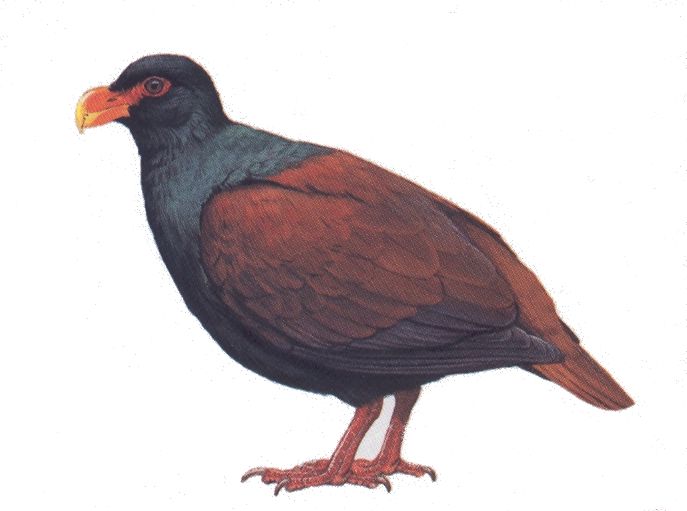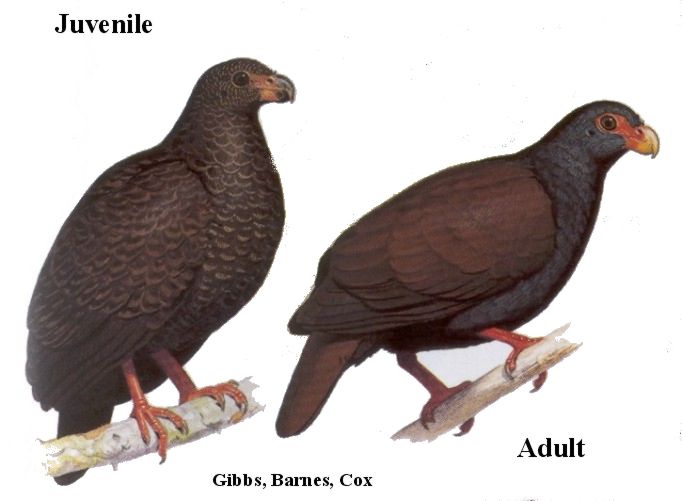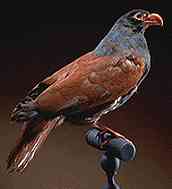
©HBW drawing
Tooth-billed Pigeon
Didunculus strigirostris
AKA: Samoan Pigeon

©HBW drawing


©MNHN
Distribution: Endemic to Samoa where it is only found from Savai'i, Upolu & Nu'utele. Said to have a strong disposition for undisturbed primary forests which contain the Dysoxylum trees which may be it's primary & only source of food. Was once considered a ground foraging species, but recent studies (Beichle 1987-1991) show it to be an arboreal species, feeding on the fruits of the Dysoxylum, which is in the mahogany family.
Description: Length 34 cm. Head, neck, breast & mantle blackish green with silvery blue suffusion on the hindneck. Underparts duller & having the feather fringes grey instead of bluish silver or greenish. Back, rump, tail undertail coverts & inner secondaries rich chestnut. Primaries, primary coverts outer secondaries & underwing greyish black. Iris dark brown, orbital skin & lores red; bill is massive with a strongly curved & hooked tip, the lower mandible with three tooth-like projections on each side; is colored yellow or orange with red at base. Legs & feet red. Females much less iridescence then males. Juveniles lack the greenish iridescence on the head, neck & breast, these areas have chestnut or buff edges forming bands which give the appearance of being barred.
NOTES: the unique bill adaptation helps it feed on the desired fruits, by using the it to "hook out" the hard pea-sized seed & removing the viscous flesh with a sawing action of the lower mandible (Beichle 1987).